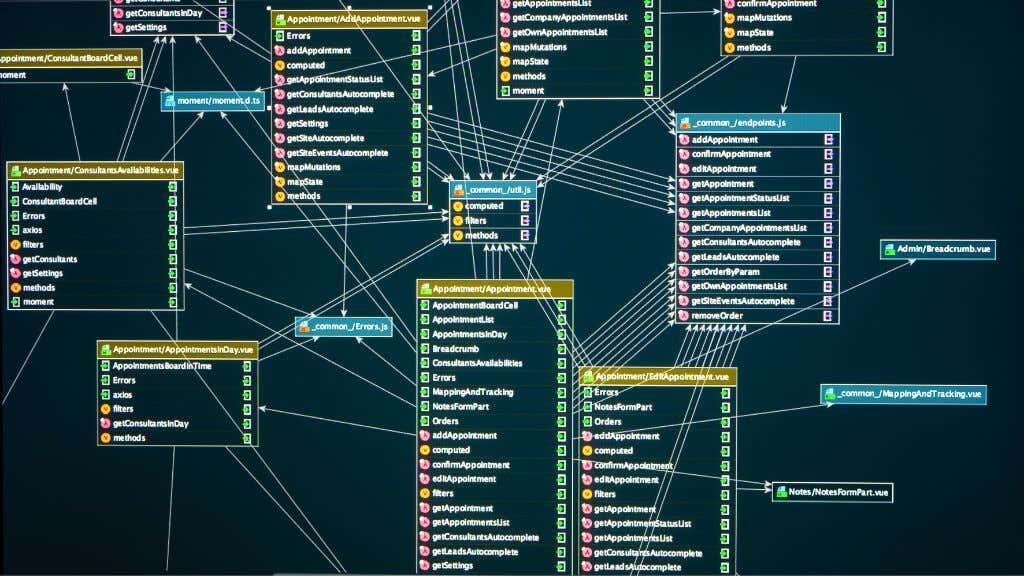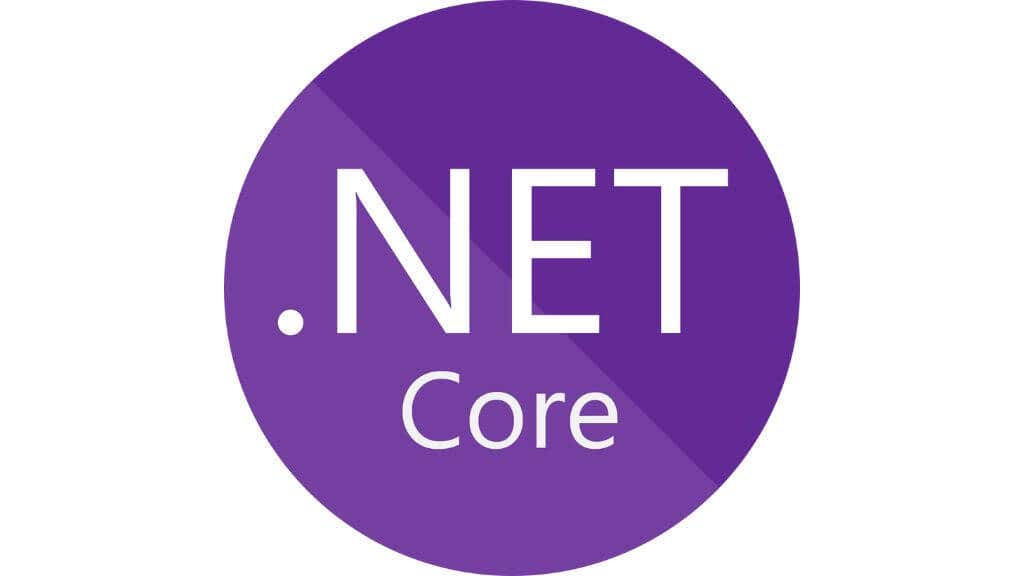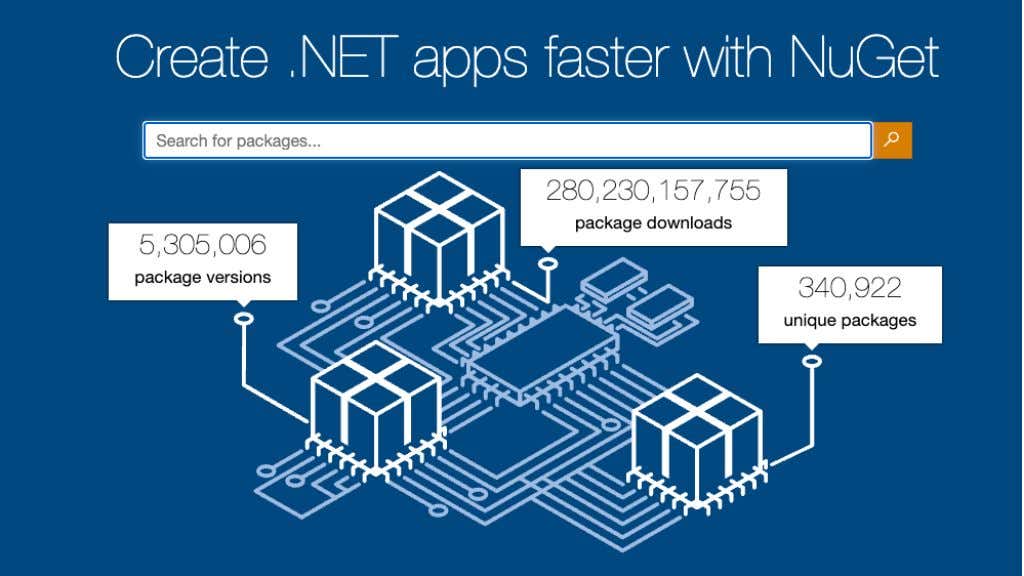While anyone can learn to code, software development is hard. This is why various Integrated Development Environments (IDEs) and tools have been created to bridge the gap between human and machine language.
One popular solution is Microsoft’s .NET Framework. So, whether you want to make software or use software developed with .NET, it’s worth knowing a little more about it.
What Is the .NET Framework?
The .NET (aka. “Dot Net”) Framework is a software framework developed by Microsoft that provides a platform for building and running various applications, including desktop, web, and mobile applications. Like Java, it’s proven to be a popular development environment for programmers over the years.
.Net’s main purpose is to provide a common set of libraries and APIs for developers to use, making it easier to build and maintain applications. This saves you time and effort because you don’t have to worry about writing low-level code for common tasks, such as reading and writing data, handling security, etc.
One main feature that makes the .NET Framework popular among developers is its support for multiple programming languages. This means that developers can write their source code in a language they’re familiar with, such as C#, Visual Basic, or F#. It’s even possible to use .NET with the popular Python language if you use Python.NET.
Another important feature of the .NET Framework is security. The framework includes built-in security features that help protect against various security threats, such as malicious code, data theft, and unauthorized access to sensitive information.
The Components of .NET
The .NET framework is a collection of development tools with specific jobs. Developers who create software using .NET will rely on several components to make their jobs easier. Not every program uses every .NET component, but all these components are a part of .NET. The following are the main components most likely to feature in developing a .NET app.
CLR: The Common Language Runtime
CLR, or the Common Language Runtime, is the foundation of the .NET Framework. It executes your code and manages memory, security, and other system-level tasks. The CLR essentially acts as a bridge between your code, its compiler, and the underlying hardware and operating system, so you don’t have to worry about those low-level details.
Part of how this works is thanks to the CIL (Common Intermedia Language). It’s a low-level, intermediate language that is used in the .NET framework as a way of representing compiled code.
When you write a .NET application, the source code is compiled into CIL, which can then be executed by the .NET runtime. The CIL code is platform-agnostic, meaning it can run on any device with the .NET runtime installed, regardless of the underlying hardware or operating system.
FCL: The Framework Class Library
FCL (Framework Class Library), is a collection of reusable classes, libraries, and APIs that are available to all .NET developers. These classes and libraries provide a wide range of functionality, including file I/O, network communication, data access, and user interface components, to name a few. So, instead of writing all of this functionality from scratch, you can simply use the classes and libraries in the FCL to get the job done.
C#: .NET’s Bespoke Programming Language
C# is a programming language specifically designed for the .NET Framework. It’s a modern, high-level language that is easy to learn and use and provides many powerful features for building a wide range of applications. Whether you’re building a desktop application, a web application, or a mobile app, C# has you covered.
VB.NET: Visual Basic for .NET
VB, or Visual Basic, is another programming language supported by the .NET Framework. It’s known for its ease of use and rapid application development capabilities. With VB, you can quickly build applications that run on the .NET Framework.
ASP.NET: The .NET Web Development Platform
ASP.NET is a web development platform that allows you to build dynamic, interactive websites and web applications. It provides a robust set of tools and APIs for building modern, scalable web applications, and it integrates with other components of the .NET Framework, such as the CLR and FCL.
Windows Forms:- Making Desktop App Design Simple
Windows Forms is a toolkit for building desktop applications. With Windows Forms, you can build rich, interactive desktop applications that run on Windows without worrying about the underlying operating system.
WPF: Windows Presentation Foundation
This is a toolkit for building modern, immersive desktop applications. With WPF, you can create highly-responsive, visually attractive applications that run on Windows, and it provides many powerful features for building rich user experiences.
Entity Framework: Easy Databases Without SQL
Entity Framework is an Object-Relational Mapping (ORM) framework for .NET that makes it easier to work with databases in your applications. With Entity Framework, you can work with your database using strongly-typed .NET objects instead of writing raw SQL. It provides many powerful features for querying, updating, and working with your data.
LINQ: Language Integrated Query
This is a set of APIs for querying and manipulating data in .NET. With LINQ, using a concise and readable syntax, you can write expressive, type-safe queries against data in various forms, including databases, XML, and in-memory collections.
WCF: Windows Communication Foundation
This is a set of APIs for building service-oriented applications in .NET. With WCF, you can build services that can communicate with each other over various protocols, including HTTP, TCP, and MSMQ. It provides many powerful features for building secure, reliable, and scalable service-based applications.
CLI: The .NET Command-Line Interface
This is a cross-platform tool for managing .NET applications and libraries. It provides a simple, unified way to manage .NET projects, packages, and dependencies from the command line, regardless of the platform or development environment you’re using.
These are just a few of the many components and features available in the .NET Framework. The .NET Framework is a comprehensive platform that provides many tools and APIs for building high-quality applications, so there’s always something new to learn and explore!
The Flavors of .NET
These are the three main flavors of .NET, each with its strengths and use cases. Whether you’re building a traditional desktop application, a cloud-based service, or a mobile app, there’s a flavor of .NET that’s right for you.
.NET Framework: The Classic Flavor
.NET Framework is the original implementation of the .NET platform, providing a comprehensive set of APIs and libraries for building Windows-based applications. It’s been around for over a decade and provides many features for building robust, scalable applications for the Windows platform. If you’re building a traditional desktop application for Windows, the .NET Framework is probably the right choice.
.NET Core: The Cross-Platform Flavor
.NET Core (now just “.NET”) is a cross-platform, open-source implementation of the .NET platform. It provides a subset of the APIs and libraries available in the .NET Framework, but it has been designed to be highly modular, lightweight, and fast, making it ideal for building cloud-based applications and microservices. With .NET Core, you can build applications that run on Windows, Linux, and macOS, so you can reach a wider range of users and platforms.
Xamarin: The Native Mobile Flavor
Xamarin is a set of APIs and tools for building native mobile applications for iOS, Android, and other mobile platforms using .NET and C#. With Xamarin, you can reuse your existing .NET skills and code to build high-quality, native mobile apps. It provides many powerful tools and APIs for building rich user experiences on mobile devices.
Troubleshooting Common .NET Problems
As with any software toolset, there are bound to be bugs either in .NET itself or the apps developed using the system. Let’s look at common issues you may face as a .NET developer and as a regular user of apps made with .NET.
Common Issues for Developers
If you’re making software with .NET, there are three common issues you may encounter while coding the night away.
Package Management Issues
If you’re using .NET for a project, you’ll probably be relying on packages and libraries from the .NET ecosystem. Sometimes, these packages can cause conflicts or break your build. If you’re having trouble with packages, try using a package manager like NuGet to manage your dependencies. This can help ensure that you have the right versions of packages and that they’re installed correctly.
Performance Issues
If your .NET application is running slowly or is taking up too much memory, it’s important to identify and resolve the issue. Try using performance profiling tools to see what’s taking up time and resources in your application, and then make changes to optimize your code. You can also optimize your database queries and improve the overall architecture of your application.
You may also want to use.NET’s Garbage Collection (GC) feature, a memory management feature in the .NET framework that automatically frees up memory that is no longer being used by an application.
Deployment Issues
Deploying a .NET application can be challenging, especially if you’re deploying to a new environment. If you need help with deployment, try using a tool like Octopus Deploy to automate the process and ensure everything is installed and configured correctly.
These are just three examples of common classes of problems you might face if you want to develop using .NET, but with such a complex suite of tools and resources, there are bound to be many different and specific ways for things to go wrong. No one said coding was always easy!
Common Issues for Users
Logically, there are far more people using apps developed using .NET than those developing them, so chances are more likely that you’ll run into issues as a user rather than a developer. Let’s look at some common problems .NET apps can exhibit.
Error Messages
Like other app development platforms. .NET comes with an extensive collection of error messages. So one of the most common problems you’re likely to run into when using is an error message specific to .NET. There are far too many to list, but examples include:
- System.IO.FileNotFoundException: This error message occurs when the app is unable to find a required file. Try reinstalling the app or checking for any available updates.
- System.NullReferenceException: This error message occurs when the app is trying to access an object that doesn’t exist. Try restarting the app or your device. If the issue persists, try contacting the app developer for assistance.
- System.Configuration.ConfigurationErrorsException: This error message occurs when there’s an error in the configuration of the .NET Framework. Try reinstalling the app or checking for any available updates.
- System.UnauthorizedAccessException: This error message occurs when the app is not authorized to access a resource. Check your permissions, or try restarting your device.
These are some more common examples, but you can simply paste the error message into a search engine like Google to see the specific problem.
Bad Performance
A common complaint with apps built on .NET is that they can be sluggish or have other general performance issues.
If the app is running slow or freezing, try closing other running apps, restarting your device, or clearing the app’s cache. If the issue persists, try reinstalling the app or checking for any available updates.
.NET Framework Mismatches
The .NET Framework is cumulative, meaning that each new version of the framework includes all the features and bug fixes from previous versions. This makes it easier for developers to target a specific version of the .NET Framework and be confident that it will include all the necessary components and bug fixes.
For example, if an app targets .NET Framework 4.7, it will also have access to all the features and bug fixes included in .NET Framework 4.6.2 and earlier versions. This allows for a more seamless development experience and helps reduce the number of compatibility issues.
However, you may run into errors or other issues if you have an older .NET Framework version than the required installed version. So it’s best to check that you have the latest version of .NET installed.
General .NET App Crashes
Like any software application, .NET programs can crash on you. The fix for the crash depends on the cause, and in general, the troubleshooting process is similar to apps developed with any other platform:
- Restart the application
- Check for updates
- Disable add-ons or extensions, if applicable
- Check that the app is compatible with your hardware and software environment
- Collect crash logs
- Use the .NET Framework Repair Tool
- Contact the developer and provide them with information about the crash, such as the logs mentioned above
If the crashes are caused by bugs in the software, then only the developer or whoever has access to the source code can fix the issue!
.NET Learning
Whether you love or hate it, .NET is sure to be around for many years, and on most devices you use. If you decide to make your own software, it’s definitely an option that should be on your shortlist.












